Cats reach puberty between six months and eight months of age. This manifests itself in loud meowing, frequent mood swings, and, of course, marking territory. Animals use urine to attract an individual of the opposite sex, to let them know they are ready to mate. Cats in this way scare off other males, conditionally saying, "This is my territory, get out of here."
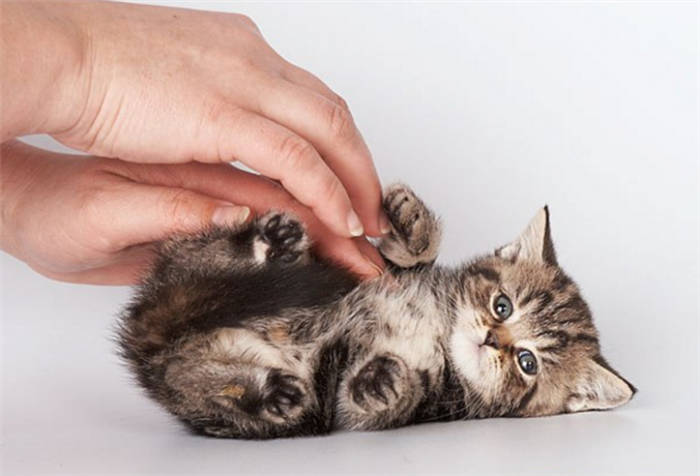
- What to do when a cat poops wherever it wants
- The first steps in a new home
- How to wean a cat from going to the toilet
- Preliminary tips
- Steps to teach your cat to pee by the toilet
- Sprays to discourage cats from going by the litter box
- Spray "Mr.Fresh poop weaning"
- Ms Kiss Cat Scent Repellent
- Other methods
- Methods of control and punishment
- How to wean the cat to shit in the wrong place: folk remedies
- The cat poops next to the litter box.
- A cat poops on the bed: what should you do?
- Why does the adult cat poop. The most frequent reasons
- Disease
- Trying to establish leadership
- Stress
- The litter box
- Why does the kitten poop?
- Why has the cat started peeing wherever?
- Re-training kittens
- Genitourinary diseases
- Why does a cat start to poop?
- The cat started shitting in the wrong place
- Cystitis
- A cat has begun to poop: Stress is to blame
What to do when a cat poops wherever it wants
Taking care of a pet requires effort and time. By getting a pet, you should not think that someone else will solve the problems associated with the care and education. If you don't take matters into your own hands from the beginning, it may be too late.
Very often the owners may witness that the kitten does not want to go to the litter box. What to do when the cat poops wherever? This question torments almost all owners. Unfortunately, when faced with the first difficulties, some people immediately try to get rid of the animal. You should not panic and despair. The problem is not easy, but it can be solved.
The first steps in a new home
When a small pet is brought into the house, he must immediately be accustomed to the toilet. The first time he may shit in different places. In no case should you beat or punish the kitten. It is better to constantly keep an eye on him. As soon as the baby starts sniffing, it is better to take him to the litter box. Time after time, the animal gets used to the demands of the owner. If there is a new member of the family, which during the day is for itself, because everyone is at work, then you should be prepared for the fact that the cat will start to shit all over the apartment. Fostering is an integral part of a pet's growth and development.
When the baby is toilet trained, one celebrates victory. And, it seems that a peaceful and serene life lies ahead. But what to do if the adult cat began to shit wherever, it can happen at any time. In this case it is silly to refer to inexperience and youth. It is a signal to the owner about the failures in the health of the pet. The reasons may be different, from physiological to psycho-emotional.
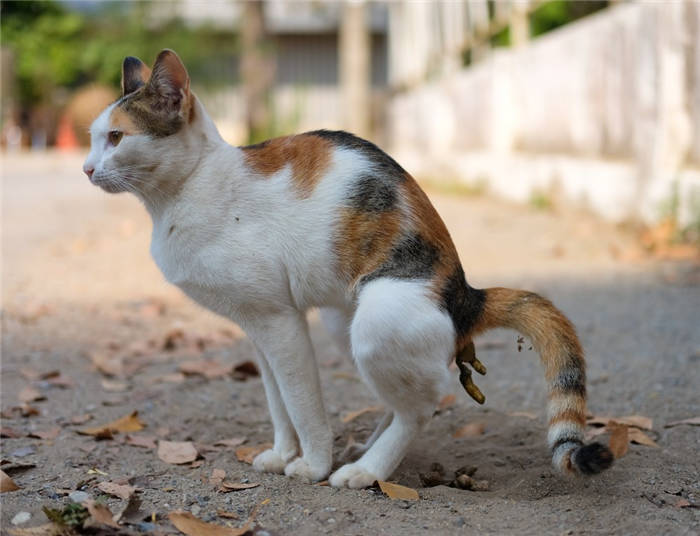
The task of the owner is to determine why the cat craps wherever and try to eliminate these causes, otherwise such troubles will continue regularly. It is necessary to act promptly.
How to wean a cat from going to the toilet
If puddles are constantly appearing in different corners of the apartment and it's not due to illness and acute stress, then the cat needs to be weaned from going by the litter box. What to do if the cat began to pee wherever. The most important thing is to be patient and follow the instructions.
Preliminary tips
These recommendations will help to carry out the weaning procedure painlessly for the owner and his kitty:
- In no case should you shout at a cat caught doing a thankless job.
- Do not poke your nose into a puddle, much less hit it. This will only make the situation worse and cause more stress.
- Do not interrupt the process by brute force – the animal will not understand why it was suspended. As a gift it may harbor a grudge and shit with redoubled force out of revenge.
Useful! If it turns out that the cat pees in the wrong place, you need to pour some warm water on his head.
Steps to teach your cat to pee by the toilet
The first and most important step to wean the cat from urinating wherever he goes is to wet clean the apartment every day. Cleanliness of the room will get rid of odors that may provoke the cats to pee in the wrong places.
The second step concerns the litter box. Choose a large and high litter box in a store, where the cat will feel safe. The litter box should be changed regularly. The best option is once every 2-3 days, but not less than once a week. If you do not do this, the pet will smell unpleasant odors and will avoid the "fragrant" place. Also do not put the litter tray next to the place where you eat – it will cause unpleasant associations for the pet.
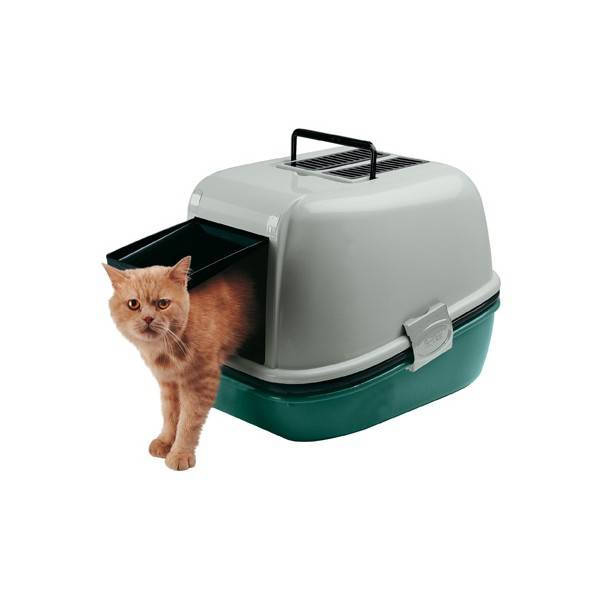
The third step. We must use special sprays. They will affect the nervous system of cats in a certain way and help to wean them from walking past the litter box. These preparations are safe and effective several times more than punishment and shouting.
Sprays to discourage cats from going by the litter box
Scent deterrents are used by quite a few pet owners. Preparations to teach the cat to pee in inappropriate places.
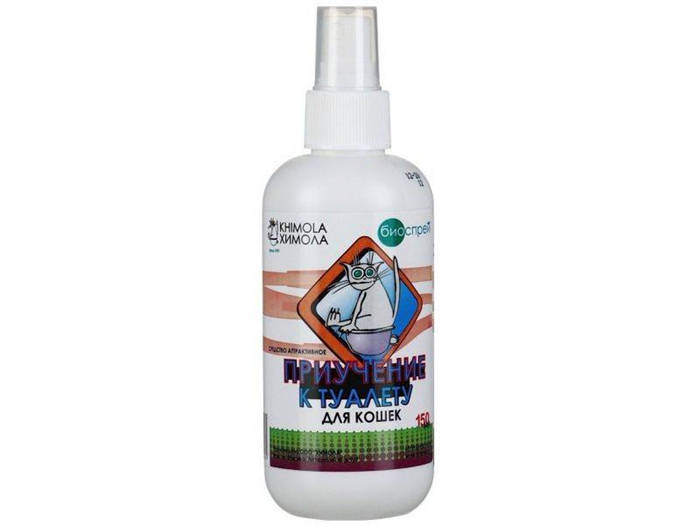
Spray "Mr.Fresh poop weaning"
This product will effectively help to wean cats from pooping. The action is manifested in such features:
- Methylnonyl ketone. It has a deterrent effect without causing discomfort to humans.
- Perfume odor "Orange". Gives a pleasant fragrance, completely neutralizes unpleasant odors.
- Wormwood. It has an unpleasant taste and helps to scare the cat away from a secluded corner to pee.
Instructions for use: shake the bottle, apply to the area from a distance of 30 cm, which arouses the cat's interest. Repeat the procedure two times a day.
Ms Kiss Cat Scent Repellent
The spray is suitable for all surfaces, it is colorless. Means used to discourage cats from shitting in the wrong places, marking the territory. To be used once a day. It works for 3 days, and can be applied to any surface.
Ingredients: water, solvents, fragrance, preservatives, emulsifier, dynatonium benzoate.
Important! The effectiveness of sprays depends on the frequency and the choice of the right place to use. Patience and a comprehensive approach will solve the problem of cats peeing in the wrong places.
Other methods
A cat by nature has an excellent sense of smell. At the same time, there are scents that attract or, on the contrary, scare away the cute fluffy things. You can try this feature if the cat has started to crap anywhere in the apartment.
If the cat poops, use repellent, unattractive scents for cats:
Cats do not like the smell of lavender, rue, thyme, lemongrass. A cat cannot tolerate essential oils, the scent of citrus, vinegar essence. If a cat, kitten, cat poops, does not want to go to the toilet on its litter box, place in the "favorite" places the inflorescences of fragrant plants, pieces of lemon, orange peel, lavender balls. Prepare a tincture based on the onion husk, garlic, wormwood. Spray the mixture into a sprayer, spray in corners and other secluded places in the apartment where the cat poops.
Wipe places where the cat craps with vinegar, bleach, concentrated solution based on laundry soap. Treat all corners with strongly smelling deodorizing agents. Such scents should discourage the cat from going to the bathroom where he wants.
Pet stores and drugstores sell aerosols, sprays, and fillers that have an attractive scent for cats. Perfumed compositions will help develop the correct conditioned reflex in the fluffy purr. The cat will go to the bathroom to the scent that attracts it.
If the cat, cat, kitten, cat poops, you can use the gastronomic method. Place bowls of food and tasty treats where the pet goes to crap. Cats will never crap where there is food.
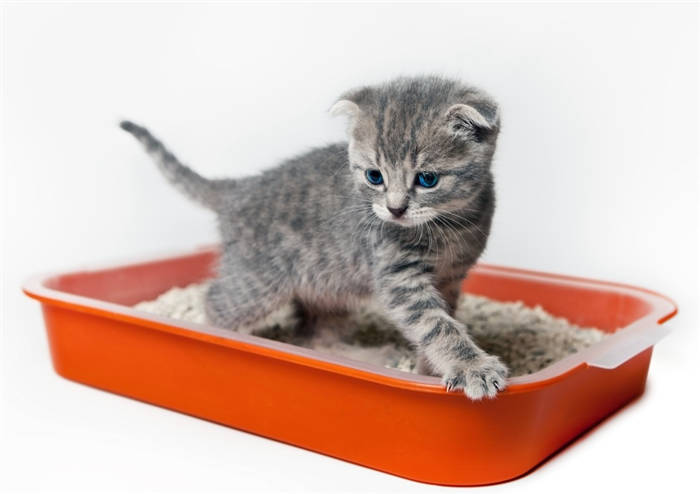
The above methods did not help? Cat, cat poops, perhaps the reason for the untidy behavior lies in diseases of the genitourinary tract. Noticing that the pet is experiencing pain, discomfort when trying to go to the toilet, frequent urge to urinate, other side uncharacteristic symptoms is worth seeking help at the vet clinic.
Methods of control and punishment
The situation should not be left as it is. The cat will continue to poop in the wrong places, but if the cat has pooped in places other than the litter box, you shouldn't yell at him. There are certain ways to help you wean your cat from it easily.
It is recommended that at the moment when the cat has to defecate you pick it up and take it to the litter box. As soon as the cat does what you want it to do, you should give it a treat to reinforce the positive result. You should do this every time until the pet gets used to the tray.
You should not punish the pet by poking its nose in the tags. Because of this, the pet may think that he is doing the right thing, or he will start defecating in various places in the apartment in spite of you. It is recommended to show him who is the master of the house.
The following method may seem ridiculous and ridiculous, but it is better to adopt it, because it will help to solve the problem. You need to help him decide on the right place to defecate. It is necessary to show the animal who is in charge in the house. To do this you should catch the cat at the moment when it is about to defecate, take it by the scruff of the neck, look it in the eyes and howl. At the same time you can lightly tap him on the nose with your finger.
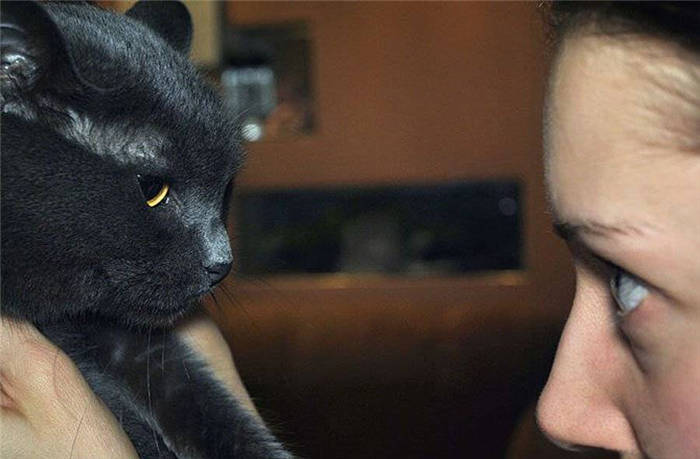
Note! Do not stop training until the pet blinks, as this indicates defeat. In parallel, it is recommended to start using folk remedies that will scare the cat away from his favorite corners.
How to wean the cat to shit in the wrong place: folk remedies
Washing off the tags is difficult enough. The process becomes more complicated if the pet updates them from time to time. It is not enough to simply wash them with disinfectants, it is required to apply cunning. It is necessary to spread their scent in these places, to leave their "marks". For this purpose, you can use perfume or sweat-scented clothes.
Cats don't like the citrus smell, so you can spray essential oils in favorite corners. A pet will not poop where he eats, so it is worth leaving his food in such places.
Another way is to put extra litter trays where he defecates often. Once the cat has chosen one of the litter boxes, the rest can be removed.
The cat poops next to the litter box.
If the cat goes to the litter box consistently and without caprice, and then suddenly his "surprises began to be not in the box, and near this occurs more and more often – look for the cause in the box or in the filler. There can be no other options.
The most common reason why cats poop outside the litter box is odor. Many cats and felines refuse to "do things" in the litter box if it already smells. And cats' noses are much more sensitive to smells than humans. If you use a litter tray without litter, with a grid, wash it more often, using neutral-scented toilet detergent, and rinse with plenty of water. If the tray already has indelible fouling, you will have to replace the tray with a new one.

There are such "delicate feline natures" who categorically refuse to go to the litter box if it is not cleaned. Usually such a cat will tell you that the litter box can and should be cleaned immediately after the toilet. If the owners are at work all day and can not constantly clean the litter box, you will have to retrain the cat: pour a good filler that absorbs odors. As an option, if space allows, you can put several litter boxes.
If a litter box is passed by, another possibility is that the litter box is just too small for him, so the poor cat misses, trying to fit into a tiny "patch". Buy your cat a bigger litter box, and the problem will be solved. The optimal size is one and a half times the length of the cat (without the tail).
Even the most expensive and high-quality filler has a limited lifespan. It is recommended to replace the entire litter box every 2-3 weeks or so. And wash the litter box thoroughly at the same time. If you do not do this, and just add new filler instead of cleaned, the rest gradually gets an unpleasant smell, so the cat poops next to the litter box, expressing its protest.
A cat poops on the bed: what should you do?
Has a stain appeared on your bed with a characteristic odor? At first you can't believe your eyes… But you have to believe your own nose: cat "gifts" are unmistakable. You just want to scold the scoundrel, and even to kick his cheeky red (or black, never mind) face. Stop it! This way you will not get anything. Experienced cat lovers will tell you at once: to punish the cat is a pointless activity.

You can sharply express your displeasure, and even punish the animal. But only if you have caught him directly at the moment of committing a "crime". And for punishment in any case you should not use your own hand. The owner's hand should associate the pet only with pleasant things: caresses, food. For educational purposes, it is acceptable to lightly slap a folded newspaper, rustling (and therefore scary) bag, and even better – to splash water from a sprayer – unpleasant and absolutely painless.
More often than not, the owner has to deal not with the "criminal" himself, but with the result of his "crime". And the perpetrator himself is usually in hiding, knowing full well that the wrath of the owner is inevitable. Often it is enough just to look at the cat to understand: he made a mistake somewhere. And here it is necessary to analyze their behavior, family relationships, innovations, to understand what is the cause of such a defiant disorder. After all, it is clear that the pet itself is well aware of the unacceptability of such behavior and does it on purpose, wanting to demonstrate something… What is it?
One reason is puberty. A grown-up cat is actively looking for a mate, expressing its desire by voice, tags on the door jambs. If the owner does not react in any way, the cat can "offend": after all, it is the beloved owner who usually solves any problems. And the cat will express its offense in such an unpleasant way.
Why does the adult cat poop. The most frequent reasons
Why does the cat crap in the wrong place? There are a number of reasons for this. The most common ones are:
Disease
As we wrote above, perhaps the pet is signaling you that something is wrong in his body. For example, when a cat has a problem with the genitourinary system, it hurts to go to the bathroom. First of all, the animal sees the cause in the litter box, so he thinks that if he changes the place, the pain will go away. See your veterinarian to rule out dangerous diseases.
Trying to establish leadership
Want your pet to be obedient and compliant? Properly establish hierarchy in your relationship. You're the leader of the pack, and your pet needs to accept that. But sometimes the natural instincts take over and the cat wants to prove that he can compete with you in the battle for the title. In the feline world, this is done by marking territory. This issue is especially relevant for those pet owners who have several animals.
Stress
Any changes in the habitual life of tailed animals are stressful. Anything can cause them stress: a car ride, loud noise, a visit to the vet or groomer, a change of diet, new furniture or lack of attention from the owner. In this case, cats try to surround themselves with their scent, so they go to the bathroom all over the apartment. This way they feel more comfortable.
If the reason for the stress is the arrival of a new animal, the cat is trying to mark and therefore occupy its territory, so it shits in the wrong place.
The litter box
Cats are always picky. If the cat doesn't like the size, shape or type of litter, it will go and relieve itself somewhere else. Also, you may refuse to go to the toilet if the litter box is dirty, or if it is too noisy and open.
Why does the kitten poop?
Most likely, the kitten is not yet accustomed to the litter box. Usually the mother teaches the kitten to use the litter box. However, if this has not happened, the responsible mission falls on your shoulders. Have patience. Very soon he will mature and will go where it is necessary.
During the sexual hunt not only cats mark their territory with scented pheromones to attract a suitor, but also cats with tags inform the opposite sex about their readiness to mate.
How this happens: the pet approaches any vertical surface with its back to it, lifts its tail, shakes it a little and leaves a small stinking puddle. That's it, the territory is marked, and the females know where to look for their mate.
Why has the cat started peeing wherever?
What to do if the cat started peeing wherever? Many people immediately give up, thinking that it is impossible to wean a cat from this detrimental habit. If the cat pees in different places, supposedly the smell stays there, and therefore it will go at it again and again. This is not true – you can teach a cat to go to the litter box or even the toilet.
If you train a cat to pee in a litter box you won't teach it to poop in a wrong place in adulthood. You can also teach the cat to pee on the toilet, but it will take time and patience. No matter what age your new cat is. If you take home an adult cat, it should be taught to pee on the litter tray or toilet right away. It is important to consider the following facts:
- A comfortable litter box is very important for a cat. It should be deep enough and 1.5 times the length of the cat's body (if your cat is more than a year old). Some cats like to pee in trays with sides. Also there are cats who do not accept a regular litter box. For them you will have to buy a bio-toilet (a house with a litter box);
- Filler for the litter box. In addition to standard fillers, you can use sand and sawdust. They differ from filler in that they are not as good at absorbing smell and absorbing. You can choose a wood, standard or flavored filler for your cat based on his preference.
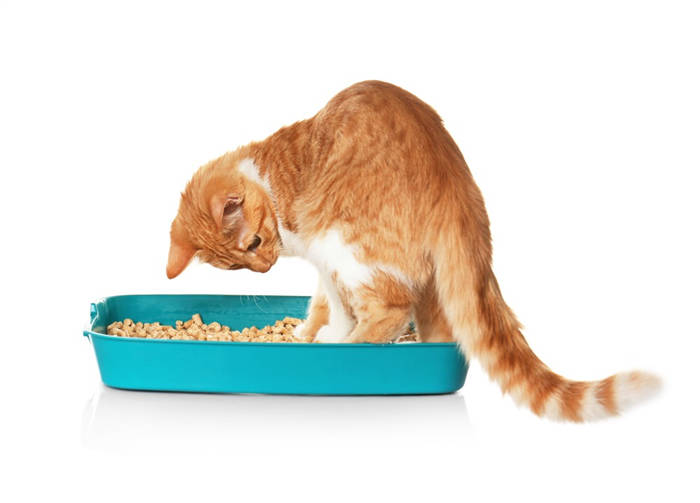
One standard reason why a cat behaves this way is because the litter is inappropriate. Cats may not like wood filler or sand, for example. If your cat has his claws removed, he will probably be uncomfortable stepping on the filler. The way out of this situation is a litter box net.
Re-training kittens
It's relatively easier with a kitten – he doesn't need to be reeducated. For the first few days you will have to follow the kitten and wait until he wants to pee. Blot the puddle with a cloth or toilet paper and take it to the litter box. Then clean up the puddle and treat the spot with a chlorine product. You can also spray the area with a repellent spray.
Genitourinary diseases
Cats are naturally very clean and will never pee in their homes. But sometimes animals accustomed to the litter box will start to pee anywhere. This behavior is not always a sign of poor cat training. The most common cause is a serious illness, such as kidney failure. The most common conditions associated with cat misbehavior are:
- Urinary incontinence. A cat does not pee besides its toilet on purpose – it just can't control the process. Usually these places are the bed, carpet or shoes;
- Urinary incontinence can develop after inflammatory processes, injuries or diseases of the spine, ureteral ectopia. Cats may also suffer from this disorder at an older age;
- Severe stress. The cat begins to pee in strange and atypical places, such as a pot of flowers. The cat may be jealous of the owner's new family member or pet, bored or worried about the owner's illness. Cats are often jealous of newborns by peeing on the baby's toys and other belongings. In this situation, it is very important to soothe and cuddle the cat and show her that you love her;
- Urolithiasis or IBC. The disease affects genetically predisposed to it, older cats, and those who eat cheap dry food. Kidney stones cause a cat a lot of trouble and problems with urination. The cat may have urges, but has difficulty urinating;
- Cystitis. This inflammatory process is similar in its symptoms to IBC. In this case, the cat will pee past the litter box or in an unnatural position (for example, standing up).
The reason for your pet's bad behavior may be a disease of the genitourinary system. Some of the most common are pyelonephritis, nephritis, glomerulonephritis (kidney inflammation), and ureitis. A cat may also suffer from atony, a disorder of peristalsis. In this condition, the cat will urinate involuntarily when the bladder overflows.
Why does a cat start to poop?
If a cat was consistently going to its litter box, and then suddenly its behavior changed – it's useless to scold and punish it. Until the owner finds the cause and does not eliminate it, the "shenanigans" will continue, regardless of the fear of punishment.
If there is a smell of cat urine in the apartment and yellow, foul-smelling splashes are found in corners, on furniture and door jambs, and the cat goes to the litter box – he is not "shitting", he is marking his territory.
This is completely normal, natural behavior for a cat. Has this never happened before? Maybe your boy has just grown up…and is claiming his new status. And at the same time, he's luring potential brides. He doesn't know how or where to find them. And his instincts say, "scare off the competition and attract girlfriends!" So he tries, poor thing, leaves tags. And the owners, for some reason, are not happy.
An adult cat can also suddenly start tagging. Usually this is due to some changes in the life of the family that make the cat doubt its status and try to "clean up" its mess this way and at the same time make sure the cat is still in control.
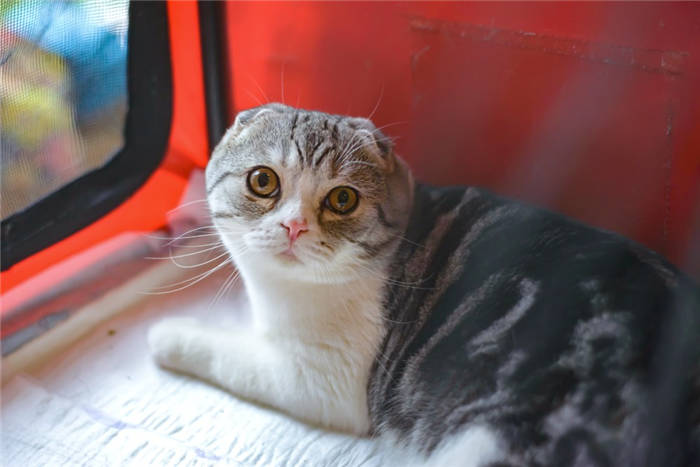
An adult cat may start marking its territory if the apartment is being repaired, because other people's smells are everywhere, which means that the situation must be corrected urgently.
Cats are confused by changes in the family composition – the arrival of a child, the arrival of relatives. The situation becomes especially difficult if, due to changes in the family situation, the cat begins to feel the lack of attention to his person. In this case, not only tags are used, but also outright rudeness – scented "piles" on the master's bed, pissed on his favorite shoes, etc.
Such demonstrative behavior is usually accompanied by other manifestations. The cat may become aggressive, not give into the hands. There are such "smart guys" who are able to break the mistress's favorite vase, knock down the room flowers, and not out of mischief and not at all by accident. This is a planned and carefully executed plan of revenge on the master-traitor, who dared to bring his wife into the house and now spends his time with her, ignoring the beloved and only cat.
The cat started shitting in the wrong place

A completely different situation, if the cat began to crap not in the litter box, and chose another secluded place as a toilet. It could be a corner behind a closet or under a bed, a narrow crevice in a closet, or a corner in a hallway. The situation is aggravated by the fact that such places are not easy to find and even harder to clean up.
If your cat is caught pooping in the wrong place, and it happens regularly, and the place stays the same or changes if the old one becomes inaccessible, the reason is probably the discomfort of the cat in his own litter box:
- The litter tray has gotten small because the cat has grown. The solution is to change the litter box to a larger one. The size is a cat and a half in length.
- Filler does not fit. Some cats do not like lumpy litter, others categorically can not tolerate wood litter – a matter of taste. Sometimes cats don't like particles of filler stuck in the fur of their paws. And sometimes they don't like the smell. Think back, did the trouble coincide with a change of litter? Then go back to the old version. And if that is not possible, pick up as similar of the same type as possible. Often the fillings are scented. But the smell that is pleasant to the owner may not please the cat at all.
- The litter box smells unpleasant. The litter box without filler is washed after each use, and at least once a week is thoroughly washed with a toilet detergent, which can dissolve salt deposits. By the way, haven't you started using a new litter tray cleaner? The litter box filler is completely changed 1-2 times a month, the tray itself is also thoroughly washed and dried.
- The place where the litter box is located is not secluded enough, so the cat is looking for a new "corner to think about". This can happen if there are many guests in the house and the litter box is located in the passageway or the toilet. Or, for example, the cat may be disturbed by a child who grabs it during "intimate activities".
- If the litter box is in the toilet, someone in the family may close the door. And the cat just can't get to the designated toilet area.
Cystitis
Cystitis is an inflammation of the mucous membrane of the bladder. Microorganisms (bacteria and viruses) are to blame for this disease. A common cause of cystitis is trauma to the bladder mucosa from uroliths, as well as hypothermia in the pet.
Pyometra is a form of purulent metritis. The disease occurs more often in adult animals. Pyometra is provoked by lack of hygiene during childbirth, accidental mating, and mating with untested breeders. The main cause of this disease is a hormonal imbalance in the cat's body, which results in a decrease in local immunity, and an infectious process develops in the uterine cavity.
Sometimes the disease develops rapidly, and the pet dies even before any signs of it appear. Pus accumulates in the uterine cavity, stretches its walls and ruptures them, pouring out into the abdominal cavity. The cat in this case needs immediate help. The main method of treatment is the removal of the uterus and ovaries.
We conclude that, faced with the undesirable behavior of the pet, the first thing to do is to show it to a veterinarian at the clinic. However, even a fully healthy cat can start to poop. Let's talk about the causes of bullying that are not related to the disease.
A cat has begun to poop: Stress is to blame
Stressful situations are often the cause of a cat going to the toilet in the wrong place. A situation that would be stressful for a cat may not seem stressful to a person. What's more, it may seem insignificant to humans that a change that, for a cat, may cause it to leave puddles in the apartment is a serious incitement. Therefore, it is important for the owner to know under what circumstances the pet will be stressed.
Conditions in which a cat's calm emotional state is disturbed are:
- Travel and travel;
- Participation in a show;
- Visiting the veterinarian at the clinic and having procedures that are uncomfortable for the animal;
- Being in a holding facility;
- Relocation, change of residence, change of owners;
- Changes in odors in the home;
- A new family member or pet in the home;
- A sudden change in food.
Outward, behavioral signs will help to make sure that the cat is really in a severe emotional state:
- Compulsive licking: licking the skin, biting the hair;
- Hypersensitivity to touch: jerking when trying to pet the animal, expressing displeasure mimically or in a voice;
- Chewing of tissues and spoiling of objects.
If you notice signs of stress in your pet, try to eliminate the source of the stress. It is probably the unstable emotional state that is causing the cat to poop. If the cause of stress cannot be eliminated, for example, it is a new pet in the house, use special sedatives for cats that reduce anxiety. Try not to change your pet's diet unnecessarily. Don't punish him too severely for his mischief. It may be hard enough as it is, and punishing your cat will only make it worse.
If there have been no stressful factors in the cat's life, perhaps the cause of the puddles lies in the sexual hunt. In this case we can say that the cat isn't shitting, it's marking.






